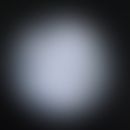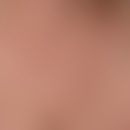Synonym(s)
ascorbic acid deficiency; Avitaminosis C; Infant Basket Butt; infantile scorbut; infantile scurvy; rachitic scurvy; Rickets hemorrhagic; scorbut infantile; Scurvy infantile; Scurvy rachitic; vitamin C deficiency
HistoryThis section has been translated automatically.
Moeller, 1859; Cheadle, 1872; Barlow, 1883
DefinitionThis section has been translated automatically.
Chronic vitamin C deficiency syndrome in children with bleeding tendency.
You might also be interested in
EtiopathogenesisThis section has been translated automatically.
Vitamin C deficiency due to malabsorption or unbalanced malnutrition. Pathogenetically important is ascorbic acid as an essential building material for the normal formation of collagen and chondroitin sulphate. Vitamin C has a high redox potential and is found in high concentrations in the lens, adrenal glands and CNS; in the case of deficiency, enchondral bone formation is disturbed.
ManifestationThis section has been translated automatically.
In children, mainly in the first 2 years of life.
ClinicThis section has been translated automatically.
- Skin/mucous membrane: Petechial haemorrhages in skin (ears, throat) and mucous membranes (gums, palate). Blue-red discoloration and swelling of the gingiva. Oedematous swelling of the legs.
- Other symptoms: anemia, wound healing disorder, joint swelling irritability, restlessness, weight loss and tachypnea; high degree of touch sensitivity with pseudoparalysis and typical frog posture of the legs, distension of the cartilaginous bone border of the ribs (scorbutic stepped chest); hematuria, melaena. Painfulness and swelling of the lower limbs due to subperiosteal hemorrhage with wincing at the lightest touch (jumping jack phenomenon).
LaboratoryThis section has been translated automatically.
Micro- or macrohematuria.
DiagnosisThis section has been translated automatically.
Radiological: Characteristic debris field zones in the epiphyseal region (most pronounced in the knee region) and subperiosteal hemorrhages.
Differential diagnosisThis section has been translated automatically.
Rickets, syphilis connata; osteomyelitis; poliomyelitis; septic-purulent arthritis; purpura Schöenlein-Hennoch; acrodyny; rheumatic fever; Caffey-Silverman syndrome; Ewing's sarcoma; melorheostosis.
TherapyThis section has been translated automatically.
Adequate intake of ascorbic acid (500-1000 mg/day i.v. or 150-2000 mg/day p.o.), adequate nutrition
LiteratureThis section has been translated automatically.
- Barlow T (1883) On cases described as "acute rickets" which are probably a combination of scurvy and rickets, the scurvy being an essential, and the rickets a variable, element. Med Chir Transact (London) 66: 159-219
- Chartier TK et al (2003) Palpable purpura in an elderly man. Arch Dermatol 139: 1363-1368
- Cheadle WB (1872) Scurvy and purpura. BMY 2: 520-522
- Conitzer L (1894) Two cases of Moeller-Barlow's disease Münch med Wschr 11: 203
- De Luna RH et al (2003) Scurvy: an often forgotten cause of bleeding. At J Hematol 74: 85-87
- Fain O et al (2003) Hypovitaminosis C in hospitalized patients. Eur J Internal Med 14: 419-425
- Henson DE, Block G, Levine M (1991) Ascorbic acid: biological function and relation to cancer. J Natl Cancer Inst 83: 547-550
- Heubner O (1892) On scurvy diseases of rachitic infants (Barlow's disease). Jb Children's Hospital Berlin NF 35: 351
- Moeller JOL (1859) About acute rickets. Königsberger Med JbI: 377
- Padh H (1991) Vitamin C: newer insight into its biochemical functions. Nutr Rev 49: 65-70
- Pimentel L (2003) Scurvy: historical review and current diagnostic approach. On J Emerg Med 21: 328-332
Incoming links (9)
Ascorbic acid deficiency; Avitaminosis c; Infant basket butt; Rickets hemorrhagic; Scorbut, infantile; Scurvy; Scurvy, infantile; Scurvy, infantile; Scurvy, rachitic;Outgoing links (4)
Melorheostosis; Rickets; Syphilis connata; Vasculitis leukocytoclastic (non-iga-associated);Disclaimer
Please ask your physician for a reliable diagnosis. This website is only meant as a reference.




